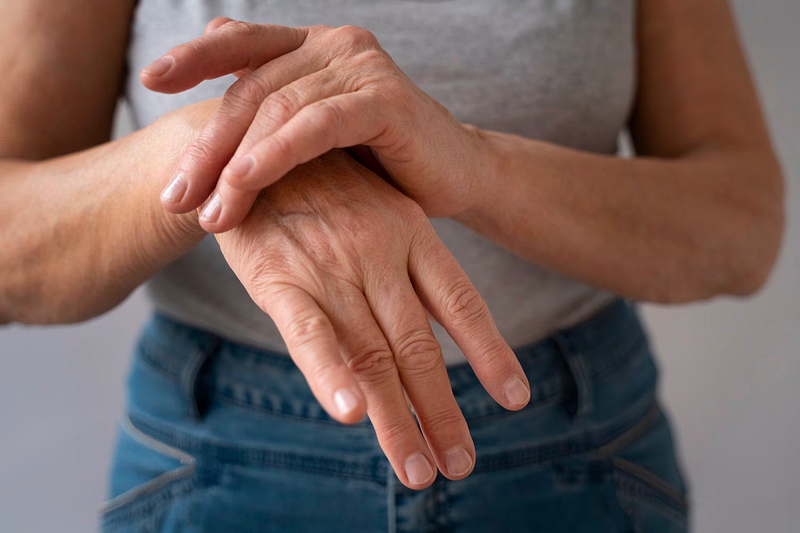If you’ve ever experienced the discomfort of cold and numb hands, accompanied by painful surges of hot and cold sensations, you might be dealing with Raynaud’s syndrome, also known as Raynaud’s disease.
This condition, characterized by the restriction of blood flow, can affect one or both hands and presents challenges for those who grapple with its unpredictable nature.
Would you like to know what deficiency causes cold hands?
Here are some common questions asked about this:
- “Why are my hands so cold but my body is warm?”
- “How do you fix cold hands?”
- “Is Raynaud’s disease serious?”
- “What are possible causes of cold fingers and hands?”
In this comprehensive guide, we’ll explore the symptoms, potential causes, and effective strategies to manage Raynaud’s disease and to better understand the medical causes of cold fingers.

1. Raynaud’s Syndrome Symptoms: Unraveling the Cold and Numbness
Raynaud’s syndrome manifests in a variety of symptoms, often causing distress to individuals dealing with its effects.
The condition may result in cold and numb hands, with sensations of hot and cold surging up and down.
The affected areas may exhibit redness, and individuals might experience vasospasms, or prolonged tightening of an artery, as well as sudden fluctuations between cold and warm sensations.
The occurrence can be unilateral or bilateral, varying from person to person.
2. Medication Considerations: Navigating Blood Vessel Constrictors
Understanding the impact of medications is crucial for managing Raynaud’s symptoms effectively.
Certain drugs, such as beta blockers and estrogen-based medications, can constrict blood vessels, worsening the poor blood supply associated with the condition.
I recommend talking to your doctor about potentially decreasing or avoiding medications that contribute to blood vessel constriction, including those prescribed for heart conditions, migraines, or cold relief.
3. Inflammation Management: Embracing an Anti-Inflammatory Approach
Inflammation plays a significant role in worsening Raynaud’s symptoms.
Adopting an anti-inflammatory approach, particularly through dietary choices, can make a substantial difference.
My Make Food Simple book is a valuable resource, offering insights into anti-inflammatory foods and nutritional strategies to alleviate inflammation and potentially improve Raynaud’s symptoms.

4. Autoimmune Conditions’ Impact: Addressing the Root Causes
Raynaud’s syndrome often coexists with other autoimmune conditions like Hashimoto’s, lupus, or fibromyalgia.
Managing these underlying autoimmune issues is crucial for addressing Raynaud’s effectively.
Gut health is important, and I’d suggest doing a systematic gut reset as a comprehensive way to support your gut.
This involves detoxification to remove harmful substances, followed by efforts to reset and optimize the gut environment, allowing organs like the liver, small intestine, and kidneys to function at a normal level.

5. Stress, Temperature, Exercise, and Electrolytes: Holistic Approaches to Management
a. Stress Management
Stress is a significant contributor to Raynaud’s symptoms because it can cause increased blood vessel constriction.
Managing stress through techniques like prioritizing quality sleep, incorporating breathing exercises, and considering herbal supplements like ashwagandha and rhodiola can contribute to overall well-being.

b. Temperature’s Influence
Temperature plays a pivotal role in Raynaud’s symptoms, with colder conditions intensifying
blood constriction.
Possible practical solutions include saunas, steam showers, and regular exercise to generate internal heat.
Additionally, living in warmer environments or creating warmth synthetically could positively impact Raynaud’s symptoms.

c. Exercise for Improved Blood Flow
Exercise is recommended as a fundamental strategy for improving blood flow.
Rebounding exercises, involving jumping on a small trampoline, can be particularly beneficial for individuals with Raynaud’s.
This form of exercise pumps fluid throughout the body, promoting increased blood circulation and helping to stoke the internal fires.
d. Electrolyte Balance
Maintaining a healthy balance of electrolytes, especially your potassium to sodium ratio, is important.
I recommend Himalayan or Celtic Sea salt as a natural source of electrolytes, and supplements like taurine and d-ribose can support potassium levels.
There is a healthy alternative to traditional sports drinks: my Electrolytes + Energyze contains essential electrolytes without the drawbacks of added sugars and artificial colorings.

6. B Vitamins for Blood Vessel Health: Nourishing the Nerves
B vitamins play a crucial role in supporting nerve health, which, in turn, influences blood vessel function.
By taking a good-quality B vitamin supplement or incorporating B vitamins into your diet through multi-vitamins, you can help stimulate blood flow and support healthy arteries.
Conclusion: Taking Steps Towards Relief
Raynaud’s syndrome may present challenges, but with a multifaceted approach, individuals can proactively support their arterial health and potentially help manage symptoms.
From understanding medication impacts to addressing inflammation, managing stress, and incorporating lifestyle changes like exercise and proper nutrition, there are practical steps that can improve the quality of life for those dealing with Raynaud’s syndrome.
For those seeking a more in-depth guide, grab a free copy of my Livingood Daily book.
It’s a valuable resource that can help you embark on a lifestyle that addresses the root causes of Raynaud’s syndrome and promotes holistic health.
By implementing these strategies, individuals may find relief and regain control over their symptoms, ultimately enhancing their overall well-being.













